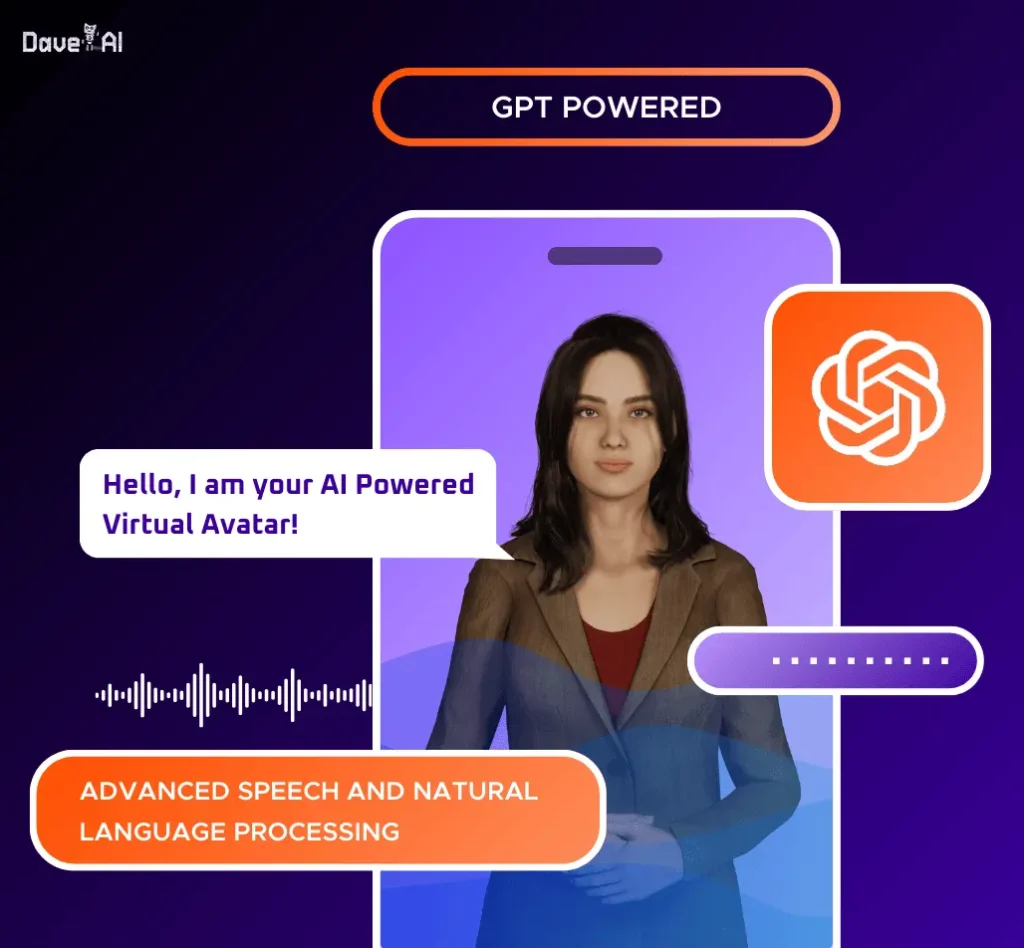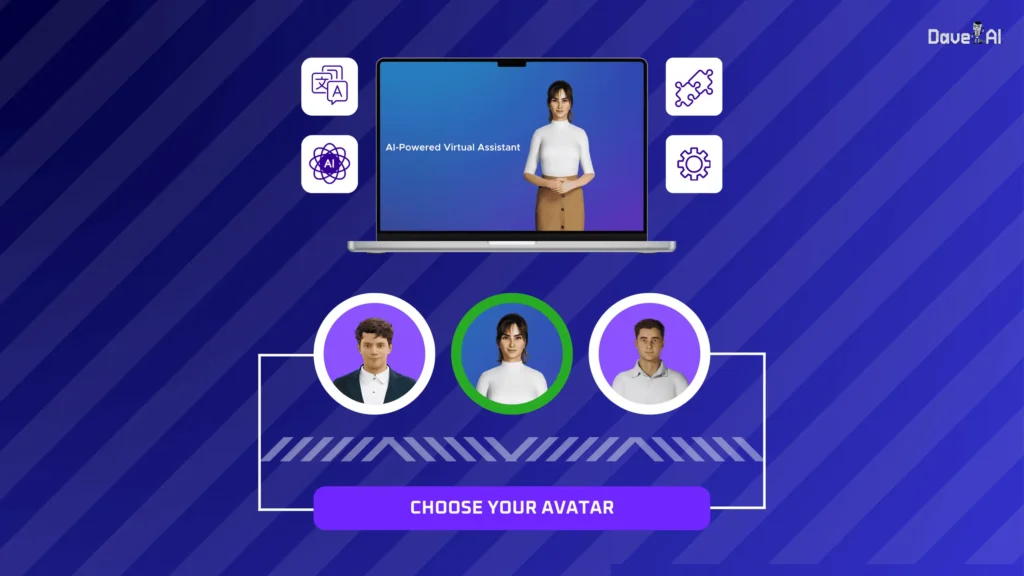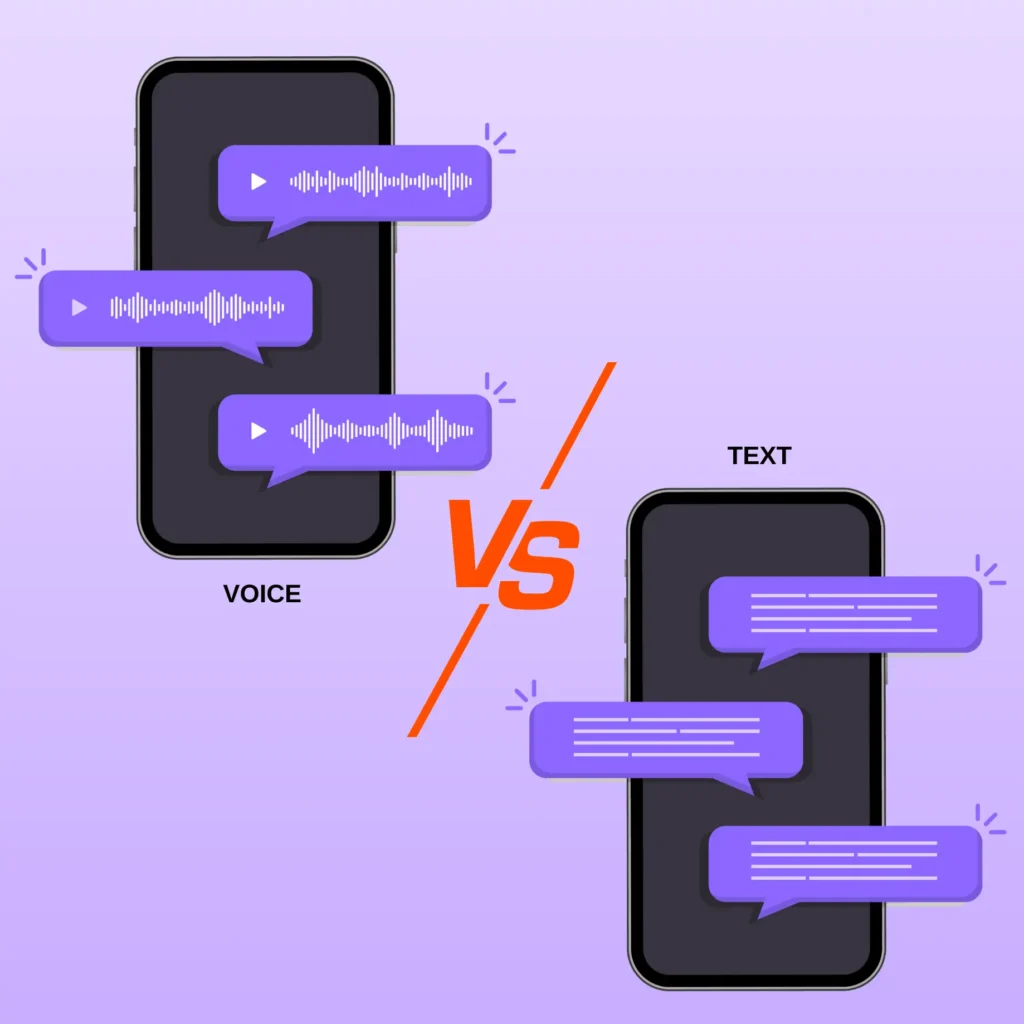Imagine having a digital assistant that can chat with your customers, provide personalized recommendations, and even mimic human emotions. Sounds far fetched? Well, it’s already here and AI-powered virtual humans are transforming industries in ways you might not even realize.
In fact, the market for AI-powered virtual humans is booming, with reports showing an estimated jump to approximately USD 1,827.65 billion by 2033 from USD 43.3 billion in 2023, with a 45.1% CAGR between 2024-2033. The reason would be an increasing demand for hyper-personalized experiences in the e-commerce market.
From 24/7 customer support and virtual training to interactive marketing campaigns, these AI-driven solutions can handle complex queries, deliver immersive experiences, and even predict customer behavior. They’re not just about convenience but about creating meaningful interactions at scale.
Read on to understand how you can take advantage of this AI wave, what these AI-powered virtual humans are and how they can transform your business in 2025.
Understanding AI-Powered Virtual Humans
AI-powered virtual humans are digital avatars that interact with users in a human-like manner. They use advanced technologies like artificial intelligence (AI), natural language processing (NLP), and machine learning to understand and respond to user queries. You can deploy these virtual humans across various platforms, including websites, mobile apps, and social media.
Virtual humans have come a long way, their journey of virtual humans began with simple chatbots and has evolved into fully interactive digital avatars. Today, AI-powered virtual humans can engage in complex conversations, provide personalized recommendations, and even mimic human emotions.

Early chatbots, like ELIZA in the 1960s, could only simulate basic conversations using pre-programmed scripts. As technology advanced, AI and Natural Language Processing (NLP) enabled smarter digital humans like Siri and Alexa that can easily decipher the context and generate realistic responses.
Today, the integration of deep learning, computer vision, and synthetic media, has turned virtual humans into lifelike digital avatars. These avatars can not only engage in natural conversations but also mirror facial expressions, emotions, and gestures, and recognize visual cues to deliver immersive, human-like experiences across industries.
But what’s powering these digital assistants? Technologies including AI, NLP, deep learning, computer vision, and synthetic media are the backbone of AI-powered virtual humans.
- Artificial Intelligence (AI) is the digital assistant’s core, enabling them to think, learn, and respond intelligently.
- Natural Language Processing (NLP) is what helps these digital entities understand and generate human-like conversations, making their interactions seamless and context-aware.
- Deep learning fuels their ability to analyze vast data sets, improving their decision-making and adaptability.
- Computer vision supports these virtual humans in processing and interpreting visual inputs, like recognizing facial expressions or gestures, adding to their lifelike qualities.
- And synthetic media combines these technologies to create realistic voices, animations, and facial movements, making virtual humans highly engaging and lifelike.
Together, all these advanced technologies deliver the human-like experience that defines AI-powered virtual humans.
Business Applications of AI-Powered Virtual Humans

Practical, real-life applications of these digital humans in businesses will help you understand their efficiency much better.
Enhancing Customer Service with Virtual Humans
AI-powered virtual humans are changing the face and pace of customer service by providing faster, more personalized, and scalable support solutions. For instance, Bank of America’s Erica helps customers with routine banking queries and also proactively suggests money-saving tips based on their spending patterns.
Virtual assistants like those used by Sephora offer everything from basic product recommendations to beauty tutorials and virtual try-ons. The customer is highly engaged with these features, and the brand gets a better shot at conversions. Sephora’s, since its AI assistant’s launch, has seen a 200% increase in engagement in their app’s Virtual Artist section and a 30% hike in lipstick sales.
As a matter of fact, The use of virtual humans in AR-enabled try-ons has boosted user interaction by 50% in the fashion and cosmetics industries.
These AI-driven Virtual assistants for customer service can handle large volumes of queries simultaneously, reducing wait times drastically and letting humans concentrate on more complex issues. Ultimately, you’ll have happier and more satisfied customers and a higher operational efficiency.
Revolutionizing E-Commerce
The E-commerce industry now has virtual humans acting as digital shopping companions for their customers. Platforms like Alibaba use AI-powered assistants to analyze customer behavior, preferences, and purchase history to give them hyper-personalized product recommendations. Similarly, H&M’s virtual stylist ‘Ogilvy’ doesn’t just suggest outfits, it also offers tips on accessorizing and adapting looks for different occasions.
In a big enterprise with busy employees, AI humans act as the go-to virtual assistant to help the staff. They handle numerous and a wide variety of tasks, from making bookings, answering queries or taking inquiries to managing order processing and giving live order updates. It can easily help customers set up services, troubleshoot issues, or find a suitable product.
Virtual humans add a hint of perfection to the shopping journey with meaningful interactions and quick responses. They, consequently, boost sales and enhance customer loyalty. Their ability to deliver tailored experiences at scale gives your e-commerce business a competitive edge, ensuring repeat purchases.
Training and Education in the Workplace
Today, workplace training and development are becoming highly interactive and engaging and have more scalable solutions with the help of AI avatars built for education and training. In fact, for businesses using AI virtual trainers in HR and recruitment can cut training costs by 40% while enhancing learning retention by 60%.
Walmart’s AI-powered virtual trainers, for instance, simulate real-world scenarios, like managing high-pressure holiday seasons, to prepare their employees effectively. They also consider ‘future data’ including macroeconomic trends, macro weather patterns, and local demographics to anticipate demand and possible fulfillment disruptions.
Companies like Accenture employ virtual humans to guide new hires through onboarding, delivering company policies, and answering FAQs in an interactive manner.
These AI tools go beyond traditional training by employing adaptive learning techniques, allowing your staff to practice skills in a risk-free, immersive environment. Instead of generic video tutorials, every employee interacts with a digital instructor that can adjust the pace and complexity of the training material in real-time.
The digital human will pause to explain more explicitly to a group struggling with a concept, using relevant examples as per their roles. For the ones with a quick grasping power, the virtual trainer will offer advanced learning material to keep them engaged. The digital human will also track progress and give personalized feedback to ensure every employee gets the best training experience.
Marketing and Brand Engagement
Virtual humans are becoming the base for modern marketing, helping brands find new and innovative ways to engage with audiences. Brands using AI-powered avatars for marketing and branding see 3x higher engagement rates compared to traditional influencers. These lifelike avatars enable brands to connect with their audience emotionally, making campaigns more memorable and effective.
Like, Samsung’s NEON avatars are not just promotional tools; they can interact in real-time to provide unique customer experiences. Coca-Cola’s use of virtual humans in interactive social media campaigns creates buzz while making the brand feel approachable and fun.
Some companies are even using AI-powered influencers like Lil Miquela, who engage followers with relatable content, bringing brands and consumers closer. Miquela has till now collaborated with 91 Brands on Instagram and reached 9.9m+ users, driving about € 219k in estimated media value. She has promoted Hugo Boss, BMW, Red Bull, and other such big brands.
Benefits of Integrating AI-Powered Virtual Humans into Your Business

As you saw above how businesses in different industries are benefiting from the implementation of AI-powered virtual humans, it may be a good idea to evaluate how these digital powerhouses can give your business a competitive edge.
Cost-Effectiveness and Scalability
The most lucrative attribute of AI virtual humans is their ability to save costs. Businesses that implement AI-powered virtual agents can reduce customer service costs by up to 30% while improving response times. Besides cost savings, AI assistants surpass the limitations of human agents and are available 24/7 to ensure an uninterrupted service. They also eliminate the need for additional staff during peak hours.
Personalization and Customer Engagement
AI virtual humans use NLP and machine learning to give realistic and human-like responses, and analyze customer behavior or purchase history. It helps them enhance customer interactions by creating immersive and engaging customer experiences, leading to a 30% increase in customer retention for retailers. For example, virtual shopping assistants used by brands like Zara can give customers personalized recommendations based on their preferences and past purchases.
Multilingual Capabilities for Global Expansion
Businesses that want to or are expanding globally can use AI-powered virtual humans to hyper personalize their customer interactions. These digital assistants can translate in real-time and offer seamless multilingual communication. It eliminates language barriers and allows you to serve global audiences efficiently, as many people are more comfortable conversing in their native language.
With 67% of consumers preferring interactions with virtual humans over traditional chatbots for a more natural experience, businesses can build stronger relationships with international customers without requiring large support teams.
Data-Driven Insights
Along with enhancing engagement, AI virtual humans can also provide valuable insights by analyzing large chunks of data. Through these AI-driven insights, you can track customer behavior, optimize strategies, and even refine your marketing campaigns in real-time.
This data-driven real-time feedback gives you the power to make informed decisions, which ultimately leads to better performance and higher ROI. For instance, AI-powered virtual recruiters are capable of reducing candidate screening time by 70%, making the hiring process faster.
Industries Benefiting from AI-Powered Virtual Humans
Let’s spare a glance at how full-fledged industries are taking advantage of these next-gen AI virtual humans.
Retail and E-Commerce
AI-powered virtual humans are the perfect tools to improve user experience and customer support, as they offer hyper personalized recommendations and 24/7 assistance. For example, Swedish retailer Lindex custom designed its Lindex Copilot to understand store associate roles and responsibilities and provide tailored guidance that helps employees deliver contextually relevant and personalized support. Canadian Tire Corporation is saving its 3,000+ corporate employees 30 to 60 minutes a day with their custom ChatCTC employee digital assistant, freeing them from mundane tasks to focus on higher-value customer experiences.
Another big breakthrough is the use of virtual shopping and sales assistants. This artificial human can give customers personalized product recommendations, help in buying decisions and alternative evaluations, support ongoing campaigns, and even do product upsells. Its outstanding ability to make an emotional connection enhances customer loyalty.
AI humans are also able to demonstrate a product and its features in a more engaging and interactive way.
Healthcare and Telemedicine
Patient care never got more empathetic and accurate before. AI-powered virtual doctors and patient engagement tools can enhance access to care and improve diagnostic accuracy. Virtual health coaches can reduce patient onboarding times by 40%, as reported by PwC.
These virtual doctors enable 24/7 telemedicine support, helping patients even in remote areas receive consultations and manage chronic conditions without hospital visits. Unlike those traditional chatbots, AI-powered virtual humans use NLP and emotional intelligence to provide empathetic interactions, which helps reduce patients’ anxiety and improves engagement in mental health care.
AI-driven diagnostics enhance disease detection, symptom analysis, and treatment recommendations by reducing human error.
To exemplify, Google’s MedPaLM-2 LLM achieved expert-level scores on the United States Medical Licensing Examination, highlighting the potential of AI in healthcare.
Entertainment and Media
Virtual influencers, interactive gaming, and storytelling are transforming the entertainment industry at a rapid pace. AI-powered avatars can generate dynamic, interactive storytelling experiences, leading to a 20% increase in viewership on digital platforms, as noted by Variety.
Japan, for example, no longer has only human pop stars, they have digital ones, too. AKB48, a popular idol group, has a virtual member named Amy, created by blending features from real singers.
Then there’s Hatsune Miku, an AI-generated artist who started as a voice synthesizer mascot but now sells out concerts with thousands of fans. China is also embracing AI performers, as the tech company ObEN Inc created virtual versions of celebrities to host the Spring Festival Gala, offering a futuristic way for stars to appear anywhere, anytime.
Banking and Financial Services
AI financial advisors have a keen eye for fraud detection, alerting customers and banks diligently. They are also enhancing customer service in the banking sector with investment or financial advice ready for customers needing it.
For instance, Karnataka Bank introduced DhIRA, an AI-powered Virtual Assistant by DaveAI across their websites and kiosks. This solution positions Karnataka Bank as a digital bank of the future, offering seamless, real-time assistance to customers and enhancing their digital banking experience.
Another example is UneeQ’s digital human “Dani”, which serves as an AI assistant for UBS, providing personalized financial information and technical support. They’ve witnessed a 2x increase in online conversion rate and nearly 300% increment in customer engagement.
Challenges in Adopting AI-Powered Virtual Humans
Now, implementing these AI virtual humans is not all rainbows and butterflies. The following are the kind of difficulties you may encounter in the possess:
Ethical Considerations
One major issue is data privacy, as these AI-driven systems often collect and process large amounts of user data. Your business must ensure compliance with regulations like GDPR and CCPA to protect customer information and avoid potential legal issues.
Another ethical concern is the potential misuse of AI avatars, such as deepfakes or misleading interactions, which can damage trust and brand reputation. Addressing these issues requires transparent AI policies, bias audits, and responsible AI development.
Technical Challenges
Integrating AI-powered virtual humans into your existing business systems can be complex. Many organizations face compatibility issues when they try to connect AI avatars with their CRM software, e-commerce platforms, or customer service databases.
Data security is another predominant challenge, as AI-driven systems must be protected against cyber threats, unauthorized access, and potential data breaches.
To overcome these technical complexity, businesses must work with experienced AI providers, like DaveAI, that provide scalable, secure, and easily integrable AI solutions.
Overcoming Resistance to Change
Employees may fear job displacement or struggle to adapt to AI-driven workflows. To ease such concerns, businesses must zero in on reskilling and upskilling programs, ensuring that AI enhances human roles rather than replacing them.
Customers, on the other hand, may be skeptical of AI interactions, especially in sensitive areas like customer service and healthcare. To win their trust, businesses must adopt strong security measures and ensure privacy.
How to Implement AI-Powered Virtual Humans in Your Business
You may be wondering by now, how exactly do you make these virtual humans a part of your workforce. This is how you can do it right:
Assessing Business Needs
Before starting the process of implementing AI-powered virtual humans, you should identify the areas where automation and AI-driven interactions can bring the most value. You may need one to improve customer support, streamline marketing and sales operations, enhance e-commerce experiences, or optimize HR processes.
Take note of the prominent challenges your business is currently facing, like handling a high volume of inquiries, reducing operational costs, or increasing engagement. This clarity will give you the right direction and ensure that you’re using AI virtual humans strategically for maximum impact.
Choosing the Right Technology
The kind of technology you should pick depends on evaluating factors like NLP capabilities, customization options, and ease of integration.
The AI model you choose will depend on the tasks it needs to perform. You can opt for one from these types:
- Neural networks: They are ideal for handling large datasets and tasks like language processing.
- Reinforcement learning: These are perfect for decision-making tasks where the AI learns through trial and error.
You could even go for pre-trained models like GPT or BERT to save your time. These models are quite knowledgeable, however, they may not specialize in your AI agents’ specific tasks. It means you’ll need to fine-tune them with continuous training on your specific dataset for customized applications.
Training and Deployment
You require proper training and a phased deployment approach to successfully implement these AI-powered virtual humans. They should be trained with real-world data to improve their accuracy and responsiveness over time.
Begin with a pilot phase, testing AI interactions in controlled scenarios before a full-scale rollout. You can use methods like:
- Unit testing: Test individual components.
- User testing: Observe real-world interactions.
- A/B testing: Compare different versions for optimal results.
After this, deploy your AI virtual human by integrating it in your preferred platform. As you progress, regular updates, monitoring, and refinement will help you optimize performance. It will ensure that your new AI workforce continues to enhance business operations effectively.
The Future of AI-Powered Virtual Humans
The global AI-powered virtual human market is projected to exceed $35 billion by 2030. Hailing to breakthroughs in NLP, deep learning, and real-time rendering, these digital humans are getting smarter. Businesses that embrace them today will be able to offer more cost-effective, scalable, and highly personalized experiences in every industry.
Smarter, Human-Like AI
AI virtual humans are evolving fast. Future versions won’t just follow scripts; they’ll instead understand emotions, respond with natural expressions, and adapt in real time. AI virtual humans will be able to sense frustration in a customer’s voice and adjust its tone.
As AI becomes more intuitive, interactions will feel less robotic and more human, making digital assistants more effective and engaging.
Expanding Into New Roles
Right now, virtual humans are making waves in customer service, retail, and healthcare, but their potential goes far beyond that. In future, AI tutors could be giving personalized lessons. Virtual trainers could help employees master new skills, or these AI companions may give mental health support and elderly care.
In entertainment, we’re already seeing AI influencers, digital brand ambassadors, and even virtual actors taking the centre stage. As AI keeps evolving, expect to see these digital humans popping up in even more aspects of daily life.
Building Ethical and Responsible AI
With great technology comes great responsibility. As AI virtual humans evolves, we need to set clear ethical guidelines to prevent Data Privacy Issues.
If your business is using AI, it should ensure transparency, fairness, and stringent security protocols. So that customers can trust these digital interactions and your business can comply with privacy and other regulations.
Conclusion: Why You Should Include AI-Powered Virtual Humans in Your Business Strategy for 2025
AI-powered virtual humans come with a lot of perks; they’re cost-effective, highly personalized, and can scale effortlessly. Sure, there are challenges to tackle, but the benefits far outweigh them. Businesses that tap into advanced AI tech like virtual humans can boost customer satisfaction.
The future of AI-powered virtual humans is just getting started. Companies that harness this technology wisely will improve efficiency.
FAQs About AI-Powered Virtual Humans
AI-powered virtual humans are implemented in customer service, marketing, training, education, and more. They can provide personalized assistance, enhance user engagement, and streamline your business operations.
Chatbots rely on pre-set scripts and basic responses, but virtual humans use advanced AI to have human-like conversations. Virtual humans can understand emotions, adapt to different contexts, and use facial expressions to make interactions natural.
Industries such as retail, healthcare, entertainment, and finance can hugely benefit from AI-powered virtual humans. They can enhance customer service, give analytical insights and personalized recommendations, improve patient care, and even create immersive experiences.
The risks include data privacy concerns, bias in AI, and potential misuse. Businesses must ensure that their AI systems are transparent, fair, and compliant with data protection regulations.
Small businesses can use AI-powered virtual humans to enhance customer service, improve marketing efforts, and automate tasks for higher efficiency. The cost-effective AI solutions will help them stay competitive, make more profits, and provide personalized experiences to their customers.
Shashank Mishra
Shashank is an experienced B2B SaaS writer for eCommerce, AI, productivity, and FinTech tools. His interests include reading, music, poetry, and traveling.



